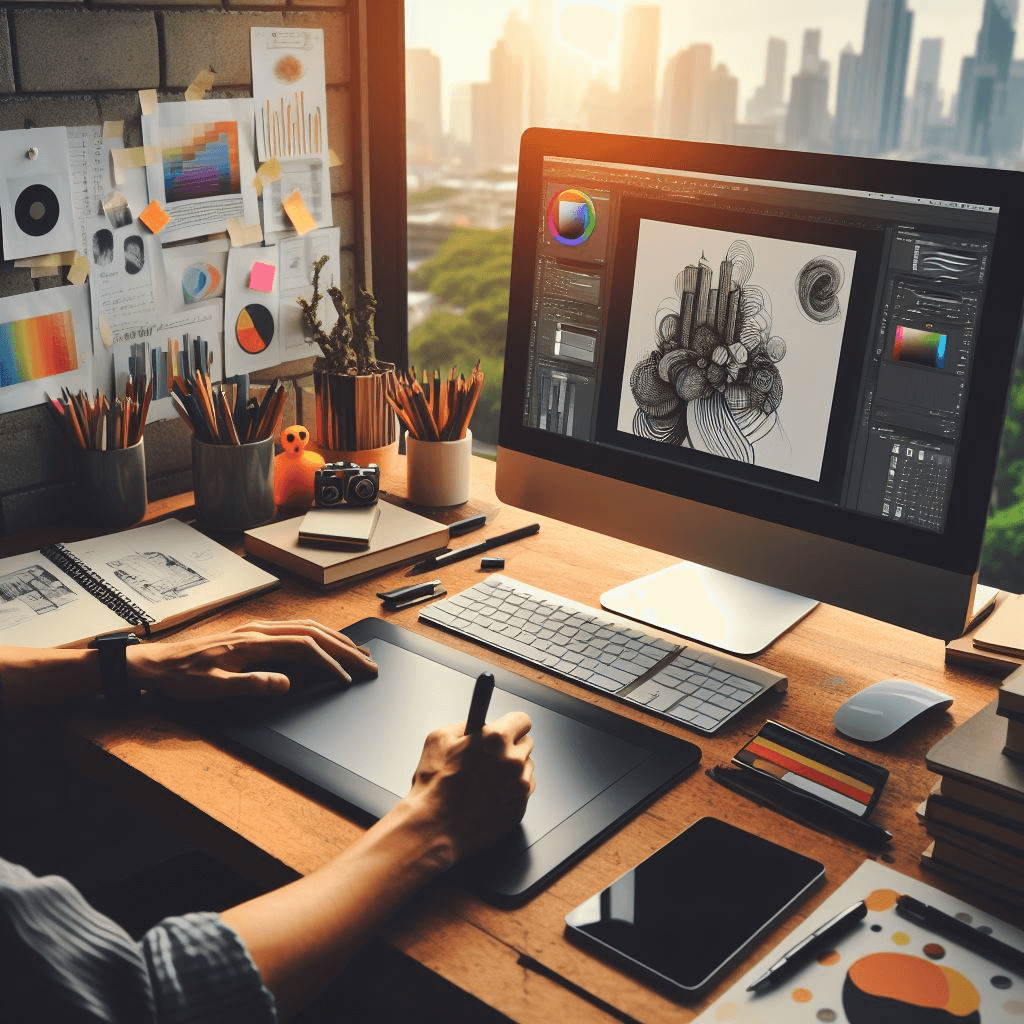Introduction: The Dynamic Canvas of Graphic Design
Why AI Cannot Replace Graphic Designers
As Artificial Intelligence (AI) continues to shape the technological landscape, discussions arise about its potential to replace various professions. Graphic design, an art form fueled by creativity and human ingenuity, stands resilient against the notion of complete automation. This blog explores ten compelling reasons why AI cannot replace graphic designers, emphasizing the indispensable role of the human touch in the realm of visual communication.
1. Artistic Creativity: Beyond Algorithmic Capabilities
AI excels in repetitive tasks and data-driven processes, yet the essence of artistic creativity extends beyond algorithmic capabilities. Graphic designers infuse their work with a unique artistic flair, incorporating emotions, cultural nuances, and storytelling elements that go beyond the reach of artificial intelligence. Thereby proving Why AI Cannot Replace Graphic Designers.
2. Emotional Intelligence in Visual Communication
Graphic design is more than arranging visual elements; it’s about conveying emotions, creating connections, and telling stories through visuals. Graphic designers possess emotional intelligence, making nuanced decisions to evoke specific responses. AI lacks the inherent understanding of human emotions required for effective visual communication. Thereby proving Why AI Cannot Replace Graphic Designers.
3. Cultural and Contextual Understanding
Understanding cultural nuances and context is pivotal in creating visuals that resonate with diverse audiences. Graphic designers bring a depth of cultural awareness to their work, ensuring that designs are not only aesthetically pleasing but also culturally sensitive and relevant. AI struggles to capture the intricacies of diverse cultural contexts. Thereby proving Why AI Cannot Replace Graphic Designers.
4. Adaptability to Creative Changes
Creativity often involves adapting to changes in real-time. Graphic designers showcase the ability to pivot creatively during the design process, responding to client feedback, market trends, and evolving project requirements. AI, while efficient, lacks the adaptability and improvisational skills inherent in human designers.
5. Intuitive Design Decision-making
The process of design often involves intuitive decision-making based on experience and a deep understanding of design principles. Graphic designers make decisions that go beyond logical analysis, relying on intuition to create visually compelling and effective designs. AI struggles to replicate this intuitive decision-making process. Thereby proving Why AI Cannot Replace Graphic Designers.
6. Customization and Personalization
Graphic design often requires a high level of customization to meet the unique needs of clients and target audiences. Graphic designers can tailor designs to specific preferences, creating personalized visual experiences. AI may lack the nuanced understanding required to deliver truly customized designs that resonate on a personal level.
7. Attention to Detail and Precision
Graphic designers are meticulous in their approach, paying close attention to every detail and ensuring precision in their work. From typography choices to color palettes, the human touch ensures a level of detail and precision that may be challenging for AI to achieve consistently. Thereby proving Why AI Cannot Replace Graphic Designers.
8. Interpreting Complex Design Briefs
Design projects often come with intricate briefs that require not only technical skill but also an understanding of the client’s vision and goals. Graphic designers excel in interpreting complex design briefs, translating them into visually impactful creations. AI may struggle to grasp the nuanced subtleties embedded in complex design requirements.
9. Collaboration and Communication Skills
Graphic designers often work collaboratively with clients, marketing teams, and other stakeholders. Effective communication and collaboration are integral to the design process. Graphic designers bring interpersonal skills and the ability to understand client feedback, fostering collaborative relationships that lead to successful design outcomes.
10. Human Connection in Design
Ultimately, graphic design is a form of visual communication that seeks to connect with the audience on a human level. Graphic designers inject a sense of humanity into their work, creating designs that resonate emotionally and intellectually. AI, devoid of personal experiences and emotions, may struggle to establish this human connection through design. Thereby proving Why AI Cannot Replace Graphic Designers.
Conclusion: The Enduring Craft of Graphic Design
In conclusion, the enduring craft of graphic design is firmly rooted in the distinct qualities of human creativity, emotional intelligence, and adaptability. While AI may play a supporting role in certain design processes, it cannot replace the nuanced and multifaceted contributions of graphic designers. The human touch remains an indispensable force, shaping the visual landscape and ensuring that graphic design continues to thrive as a testament to the fusion of art and technology.
Also Read: 10 Reasons Why AI Will Never Replace YouTubers: Overcome the Fear
